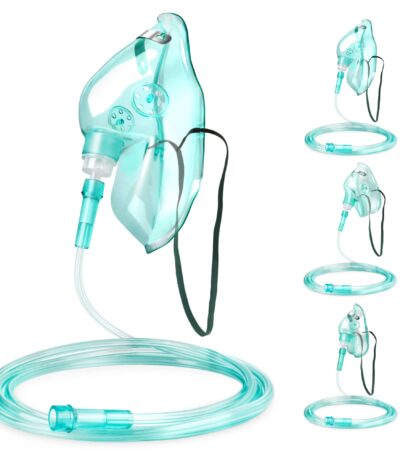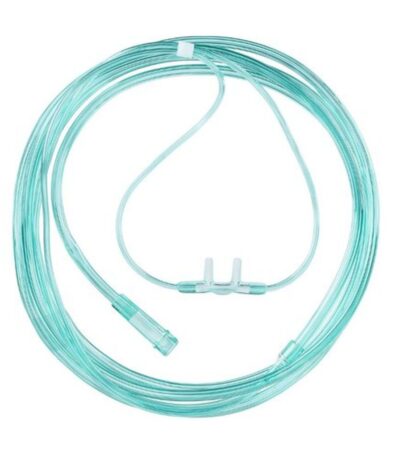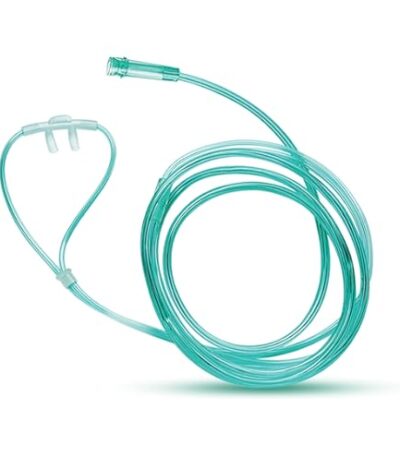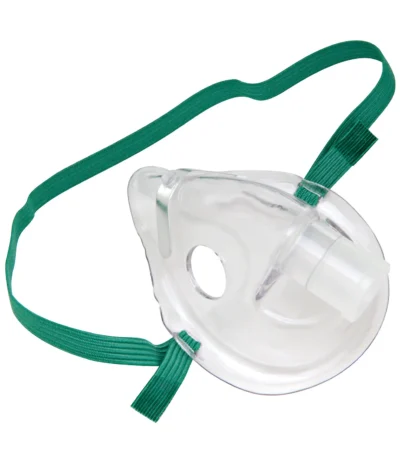Filter by price
Stock status
Showing all 7 results
Adult Oxygen Mask
Key Features
-
Adult-sized anatomical shape
Designed to comfortably fit over the nose and mouth of an adult, forming a gentle seal for efficient oxygen delivery. -
Soft medical-grade material
Usually made of clear, flexible PVC to enhance comfort and allow healthcare providers to observe breathing and skin color. -
Elastic head strap
An adjustable strap keeps the mask securely in place without requiring the patient to hold it. -
Flexible nose clip
Many masks include a metal or molded clip that can be adjusted to improve the fit and minimize oxygen leakage. -
Standard oxygen tubing
The mask comes with long, kink-resistant tubing that connects to an oxygen source. Ribbed or star-lumen designs help maintain airflow even if the tube bends. -
Universal connector
Fits standard oxygen outlets on concentrators, wall ports, and cylinders.
How It Works
Oxygen flows from the source through the tubing and into the mask, where the patient inhales it directly. The mask ensures a higher concentration of oxygen compared to room air and is useful for patients who require controlled oxygen therapy.
Common Uses
-
Breathing difficulty due to respiratory illness
-
Emergency resuscitation
-
Post-surgical recovery
-
Chronic lung diseases such as COPD
-
Situations where a nasal cannula is insufficient
Types of Adult Oxygen Masks
-
Simple oxygen mask – provides moderate oxygen concentrations.
-
Non-rebreather mask – delivers high oxygen concentration with one-way valves and reservoir bag.
-
Venturi mask – delivers precise oxygen concentration settings.
Adult Oxygen Nasal Prong
Key Features
-
Soft dual nasal prongs
Two small curved tips sit inside the nostrils and deliver a steady flow of oxygen without causing significant irritation. -
Flexible, medical-grade tubing
Made of soft PVC designed to rest comfortably over the ears and under the chin, minimizing pressure and skin irritation. -
Kink-resistant design
Often features a star-lumen or ribbed structure that prevents the tube from collapsing, ensuring consistent oxygen flow. -
Universal oxygen connector
The end of the tubing fits standard oxygen outlets on concentrators, cylinders, and wall ports. -
Lightweight and comfortable
Preferred for patients requiring long-term or continuous oxygen therapy because it allows free movement, speaking, and oral intake.
How It Works
Oxygen flows from the supply source through the tubing and exits through the nasal prongs directly into the nostrils. The patient inhales the enriched air naturally with each breath.
Typical Flow Rates
-
Usually used for 1–6 liters per minute
-
Provides 24%–44% oxygen concentration, depending on flow and patient breathing
Common Uses
-
Long-term oxygen therapy for chronic lung disease (e.g., COPD)
-
Mild to moderate respiratory distress
-
Recovery after surgery
-
Home oxygen therapy
-
Emergency and ambulance use
-
Situations where a mask is uncomfortable or unnecessary
Benefits
-
Allows talking, eating, and drinking
-
Less claustrophobic than a mask
-
Minimal obstruction to the face
-
Suitable for extended use
Neonate Oxygen Nasal Prong
Key Features
-
Ultra-small nasal prongs
Tiny, soft prongs fit snugly into a newborn’s nostrils without causing trauma or pressure. -
Extremely soft tubing
Made from very flexible, medical-grade PVC or silicone to prevent skin breakdown around the cheeks and ears. -
Lightweight and gentle design
Designed to rest comfortably without adding pressure to the face; often secured with soft tapes rather than elastic straps to protect fragile skin. -
Kink-resistant oxygen tubing
Ensures a continuous flow of oxygen even when the baby moves. -
Standard oxygen connector
Attaches to neonatal oxygen flowmeters and concentrators used in NICUs, delivery rooms, and nurseries.
How It Works
Oxygen flows from the supply source through the tubing and exits through the tiny prongs into the infant’s nostrils. The newborn inhales the enriched air naturally with each breath, making it suitable for babies who can breathe spontaneously but require oxygen support.
Typical Flow Rates
-
Usually 0.1 to 2 liters per minute, depending on neonatal guidelines
-
Provides gentle oxygen delivery suitable for sensitive lungs
Common Uses
-
Premature infants with immature lungs
-
Neonatal respiratory distress
-
Mild hypoxia
-
Post-delivery stabilization
-
Oxygen support in NICUs and neonatal wards
-
Conditions such as TTN (transient tachypnea of the newborn)
Paediatric Nebulizer Mask
Key Features
-
Child-sized design
Specifically shaped to fit a child’s smaller facial structure, ensuring better comfort and more efficient medication delivery. -
Soft, gentle material
Made from clear, medical-grade PVC or silicone that is flexible and comfortable against sensitive skin. -
Adjustable strap
An elastic head strap helps hold the mask in place, allowing the child to sit calmly without needing to grip it. -
Smooth breath delivery
The mask covers both the mouth and nose, enabling consistent inhalation of the medicated mist. -
Universal connector
Fits standard nebulizer tubing and medication chambers, making it compatible with most nebulizer machines. -
Reduced medication loss
The small cup-to-mask pathway is designed to minimize air escape and maximize drug delivery to the lungs.
Optional Child-Friendly Features
-
Soft edges to prevent pressure marks
-
Transparent design so caregivers can monitor breathing
-
Some versions include colorful elements to make therapy less scary for children
Typical Components (if sold as a kit)
-
Paediatric mask
-
Medicine chamber (nebulizer cup)
-
Flexible tubing
-
Elastic strap
Paediatric Oxygen Nasal Prong
Key Features
-
Small, soft nasal prongs
Two gentle curved tips fit comfortably into a child’s small nostrils without causing irritation. -
Flexible, lightweight tubing
Made of soft medical-grade PVC designed to rest easily over the ears and under the chin, minimizing pressure and improving comfort. -
Kink-resistant tube design
Often features star-lumen or ribbed tubing that prevents collapse, ensuring uninterrupted oxygen flow. -
Universal oxygen connector
The distal end connects to standard oxygen outlets on concentrators, cylinders, and wall flow meters. -
Comfort-focused design
Less intrusive than a mask, allowing the child to talk, drink, sleep, and play with minimal restriction.
How It Works
Oxygen travels from the supply source through the tubing and is delivered gently through the nasal prongs. The child inhales the oxygen-enriched air naturally with each breath.
Typical Flow Rates
-
Commonly used for 0.25–4 liters per minute, depending on age and medical need
-
Provides low to moderate oxygen concentrations suitable for stable or mildly distressed pediatric patients
Common Uses
-
Asthma and wheezing episodes
-
Pneumonia and chest infections
-
Bronchiolitis
-
Mild to moderate hypoxia
-
Post-operative oxygen support
-
Long-term home oxygen therapy for chronic lung disease
Benefits
-
Comfortable for prolonged use
-
Allows eating, speaking, and movement
-
Less intimidating for children than a face mask
-
Reduces the risk of claustrophobia or distress
Surgical Spirit 5 Litres
Composition (Typical)
-
Isopropyl alcohol or ethanol (usually 70–95%) – primary disinfecting agent
-
Methyl salicylate – provides mild antiseptic and soothing properties
-
Castor oil or other emollients – helps prevent skin dryness
-
Purified water – diluent
(Exact composition may vary by manufacturer.)
Key Features
-
Large 5-litre capacity
Ideal for hospitals, clinics, pharmacies, salons, and high-use areas. -
Powerful antiseptic action
Kills bacteria, viruses, and fungi on skin and surfaces. -
Fast-drying formulation
Evaporates quickly, leaving the skin dry and clean without sticky residue. -
Multi-purpose use
Suitable for skin preparation, surface cleaning, disinfecting instruments, and hand hygiene (when appropriate). -
Secure container
Usually supplied in a sealed, chemical-resistant jerrycan-style bottle with a tight cap to prevent evaporation.
Common Uses
-
Pre-procedural skin cleaning
-
Disinfection before injections or blood draws
-
General wound hygiene
-
Cleaning small medical tools
-
Cleaning and sanitizing surfaces
-
Use in beauty salons and tattoo studios for hygiene
Advantages
-
Cost-effective for heavy daily use
-
Reliable and effective broad-spectrum disinfectant
-
Convenient for refilling smaller bottles or dispensers
Velvex Cotton Wool 400g
Key Features
-
Soft and gentle texture
Made from pure, bleached cotton that is soft on the skin, making it suitable for sensitive areas. -
High absorbency
Designed to absorb fluids efficiently, ideal for cleaning wounds, applying antiseptics, and managing minor bleeding. -
400-gram large roll
Provides a generous amount of cotton, suitable for hospitals, clinics, maternity units, salons, and home use. -
Non-linting
Minimizes fiber shedding, ensuring a clean and safe application during medical procedures. -
Hygienically packed
Comes sealed in a protective, easy-to-open pack to maintain cleanliness and prevent contamination.
Common Uses
-
Wound cleaning and dressing
-
Applying surgical spirit, antiseptics, or ointments
-
Padding under bandages or casts
-
Maternity and baby care
-
Beauty and salon applications (makeup removal, cleansing)
-
General household hygiene
Summer health medical supplies limited.
We are happy to serve you fro all your health, medical and hospital supplies. Contact Us Here for any enquiries that you may need clarification.










